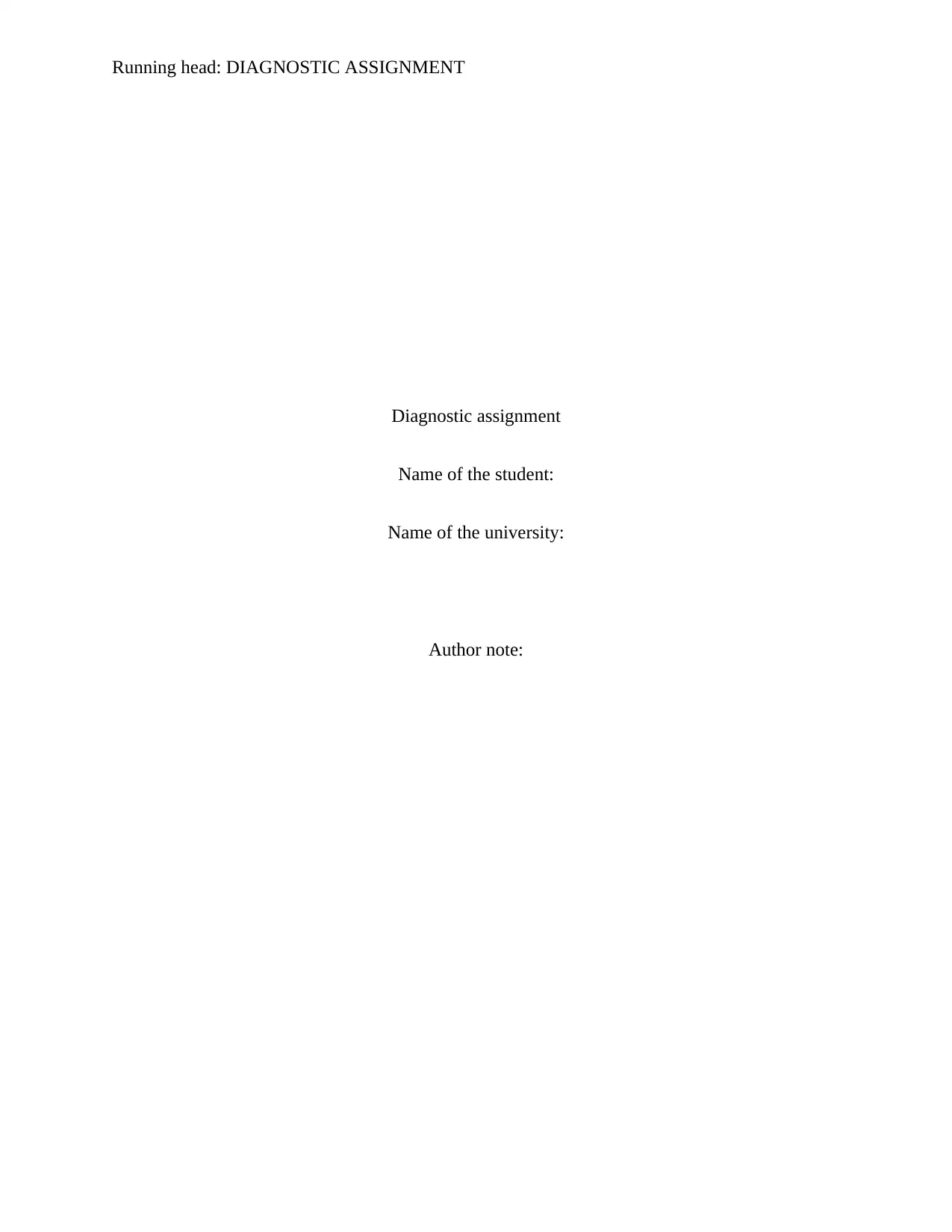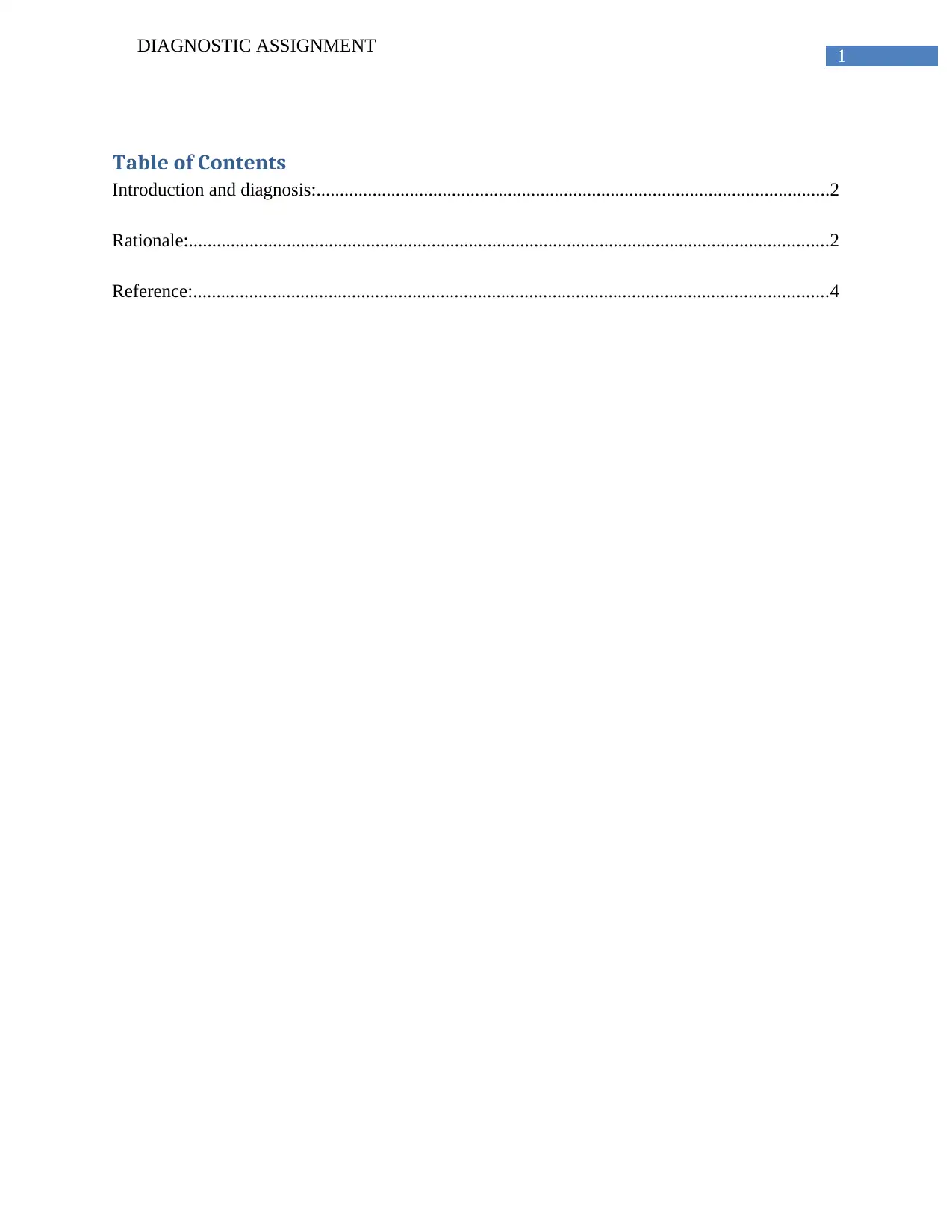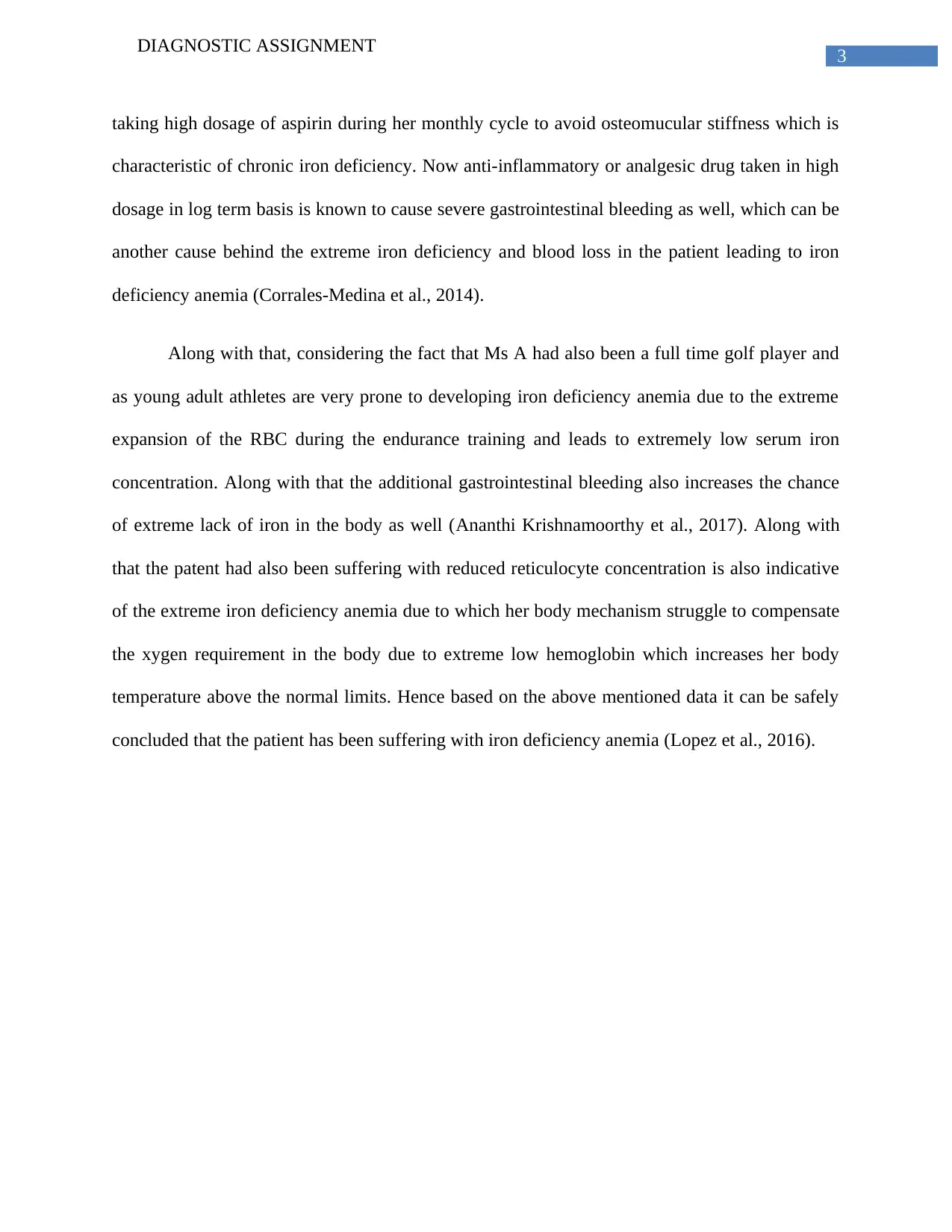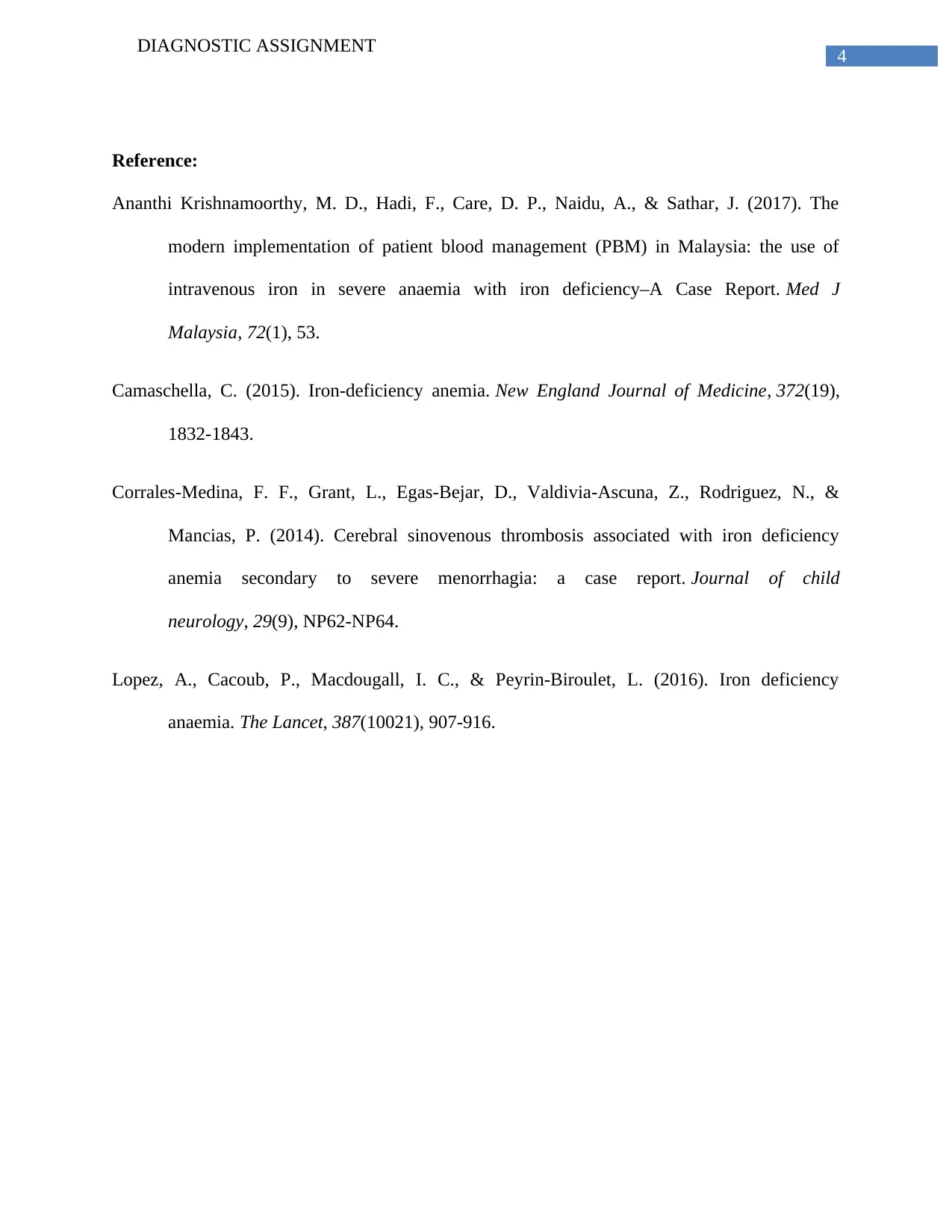Diagnostic Assignment on Menorrhagia and Iron Deficiency Anemia
VerifiedAdded on 2023/06/15
|5
|803
|131
AI Summary
This diagnostic assignment discusses the case of a patient suffering from menorrhagia and iron deficiency anemia. It includes the rationale behind the diagnosis and references.
Contribute Materials
Your contribution can guide someone’s learning journey. Share your
documents today.
1 out of 5











![[object Object]](/_next/static/media/star-bottom.7253800d.svg)